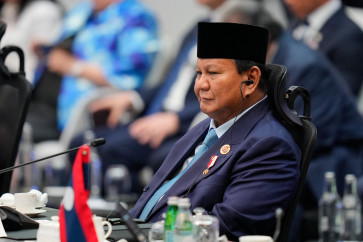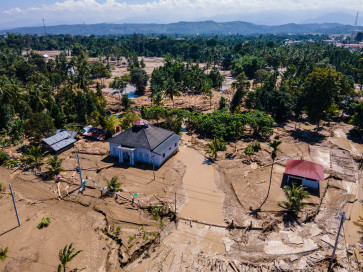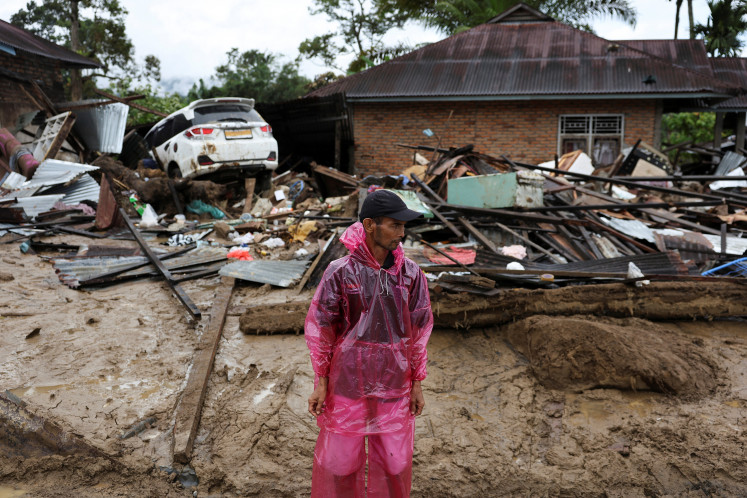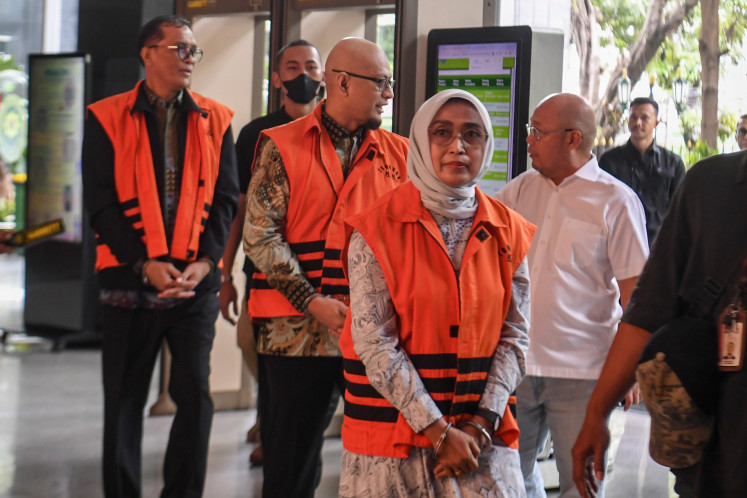Popular Reads
Top Results
Can't find what you're looking for?
View all search resultsPopular Reads
Top Results
Can't find what you're looking for?
View all search resultsSolution needed to manage water resources in SE Asia
As demand for water is projected to increase dramatically in the near future, nations across Southeast Asia need to better manage water resources and create dynamic solutions to cope with water challenges in the region, experts have warned
Change text size
Gift Premium Articles
to Anyone
A
s demand for water is projected to increase dramatically in the near future, nations across Southeast Asia need to better manage water resources and create dynamic solutions to cope with water challenges in the region, experts have warned.
The Organization for Economic Cooperation and Development (OECD) has reported that demand for water ' which includes industrial, electrical and domestic use ' is projected to increase 55 percent by 2050. Combined with climate change, this will put further stress on water resources, the OECD says.
International experts met recently in Bogor, West Java, in an OECD-Asian Development Bank (ADB) sponsored workshop called 'Climate Change Vulnerability and Adaptation in River Basins of Asia', and discussed the latest challenges of global warming and efforts to reduce the vulnerability of ecological systems.
'The risks are fully acknowledged and there is a commitment to mitigating these risks,' said Charles Rodgers, senior researcher at the ADB.
The workshop concerned itself with creating dynamic solutions for climate and water challenges, focusing on the Citarum River, as one example of increasingly stressed river basins throughout Southeast Asia, but whose centrality to Javanese culture makes it an important case study.
The river flows through West Java and is among the most polluted rivers in the world, with 5 million people live along its blue-brown waters.
Akhmad Faqih of the Bogor Institute of Agriculture (IPB) said climate change could result in more rainfall that would damage Citarum River basin communities.
'It is projected that more intense rainfall and the increased probability of extreme rainfall will occur and will increase the chances of flooding in the wet season and drought in the dry season,' he said.
Residents of cities along the river already know the inconvenience of flooding. It has been less publicized, however, that excess rainfall and drought in rural areas could severely impact the country's food supply, with the potential to cause soil erosion and crop damage. Rice, in particular, was vulnerable, he added.
Impron of the IPB said that in 2010 Citarum River basin rice supplies exceeded demand by 17 percent ' a good yield. But as a result of climate change this balance could be disrupted. It is predicted that in 2025 demand will exceed supply by 35 percent, or 1.1 million tons; and 25 rural villages in the Citarum River basin require immediate action to reduce their vulnerability to drought and flood.
The situation is similar in Bali and East Java, which is responsible for 22 percent of Indonesia's rice production, with soil-climate suitability down by 20 percent in the last 20 years, said Takeshi Takama, an associate of the Stockholm Environment Institute.
Another example of a water resource endangered by climate change is the Mekong River basin and delta, which runs through six countries: China, Myanmar, Laos, Thailand, Cambodia and Vietnam.
Long Hoang Phi of Wageningen University said that while flooding was a natural phenomenon, climate change caused extreme floods that 'pose challenges for safety and sustainability'.










